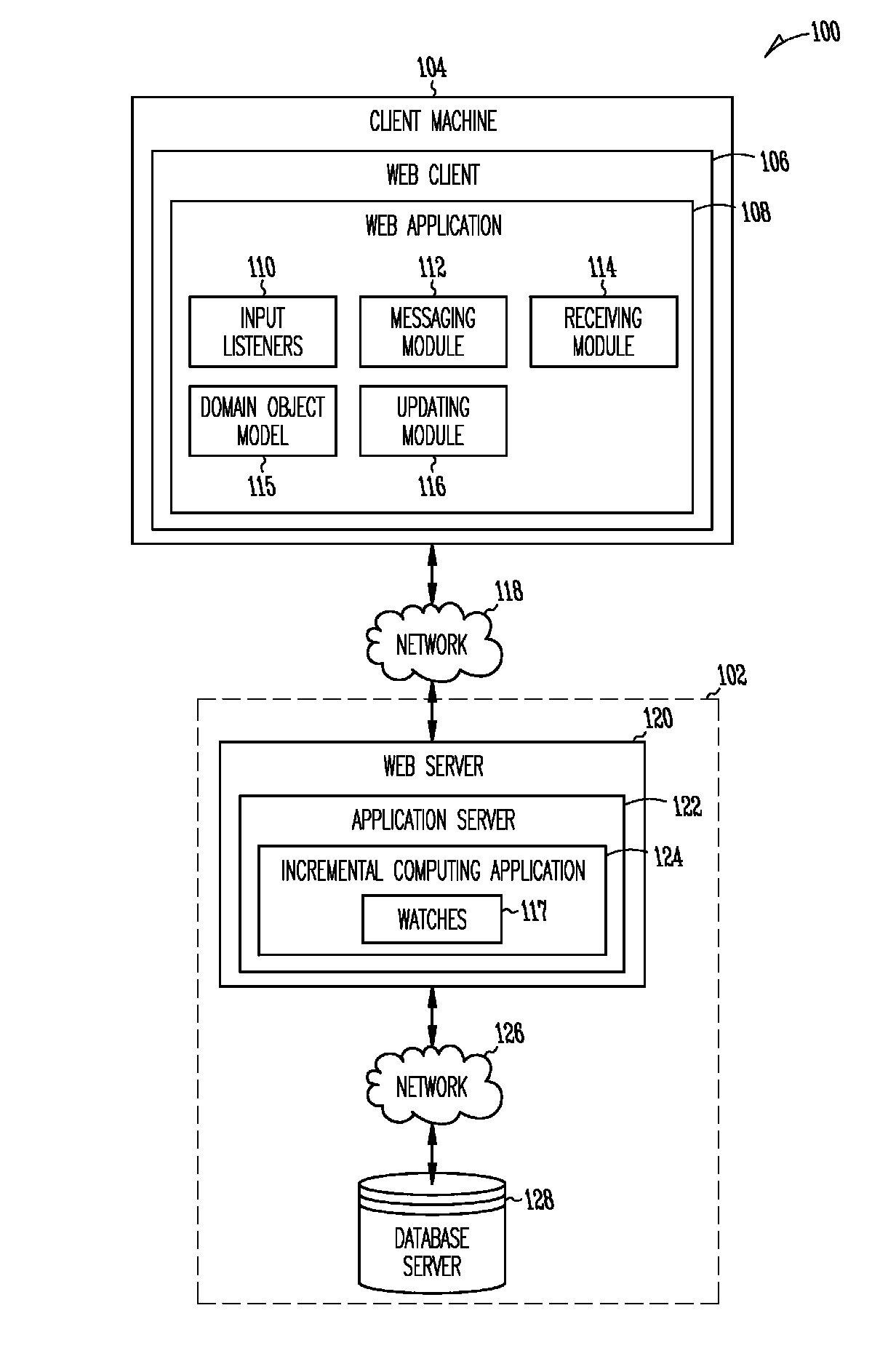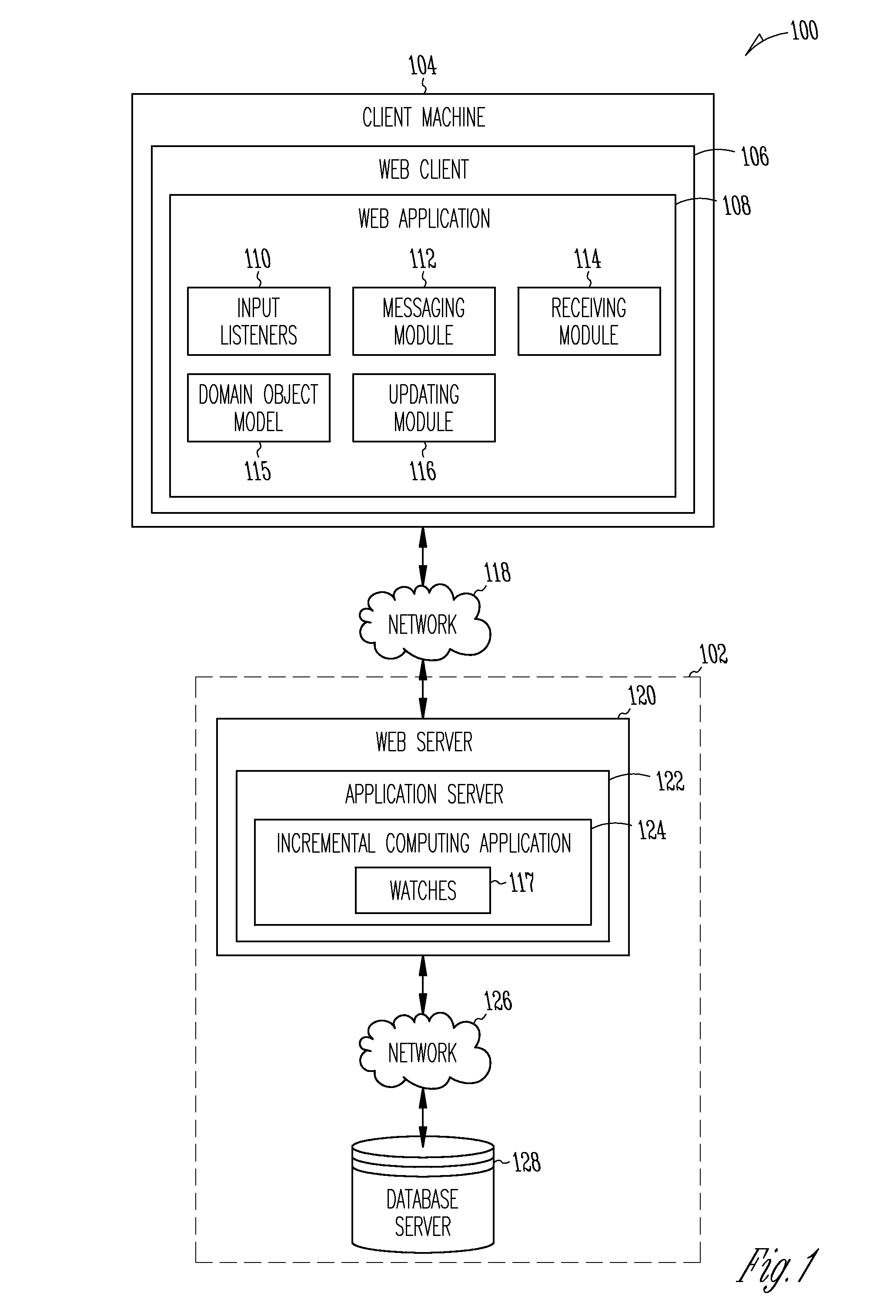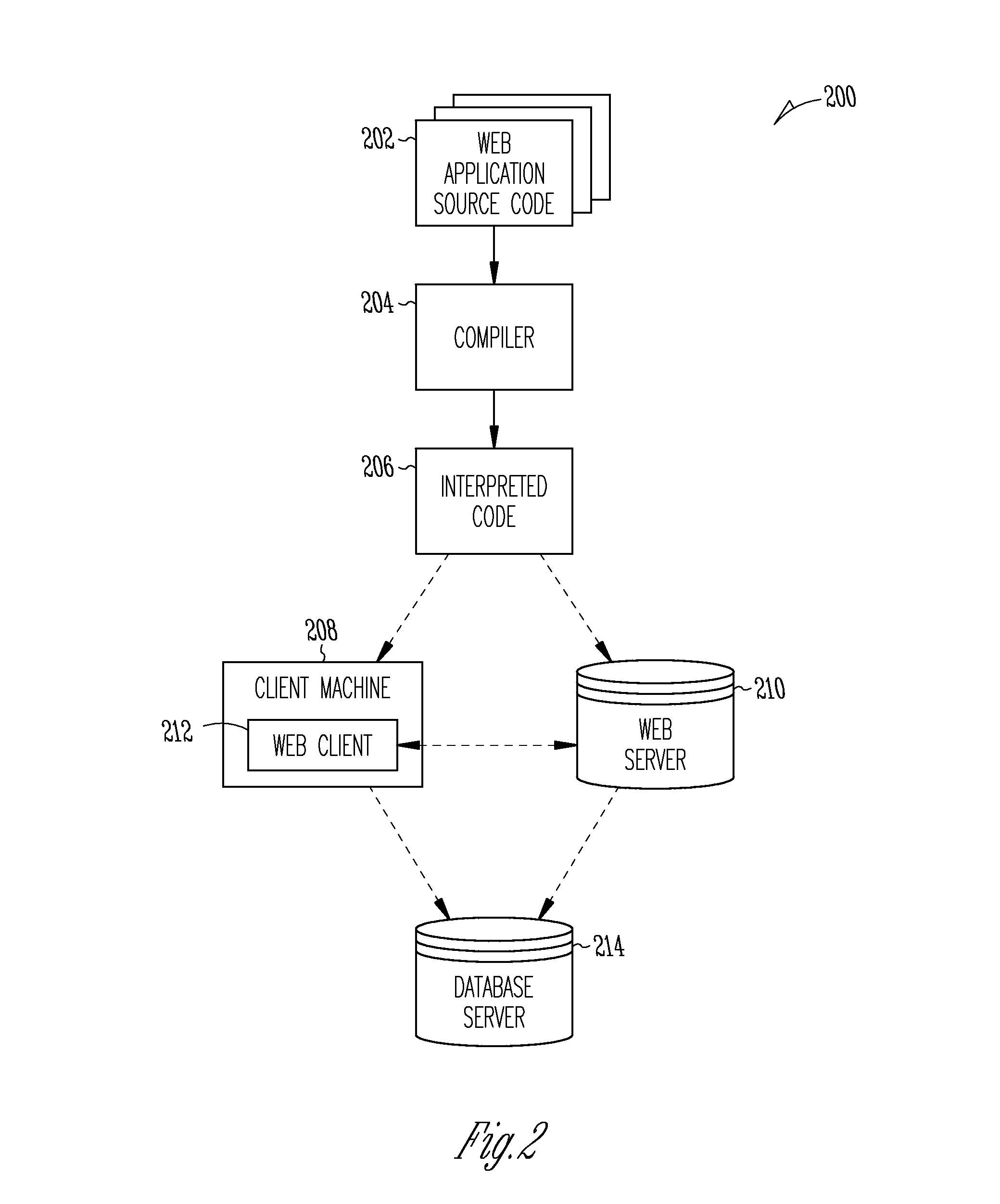Incremental computing of changes to computer user interfaces
a computer user interface and user interface technology, applied in the field of incremental computing of computer user interface changes, can solve the problems of requiring significant developer resources, introducing latency issues affecting responsiveness, user interfaces that present data that is complex or abundant, etc., to achieve the effect of reducing the number of users, and increasing the number of users
- Summary
- Abstract
- Description
- Claims
- Application Information
AI Technical Summary
Benefits of technology
Problems solved by technology
Method used
Image
Examples
Embodiment Construction
[0021]Example methods and systems for supporting incremental computing are described. In the following description, for purposes of explanation, numerous specific details are set forth in order to provide a thorough understanding of example embodiments. It will be evident, however, to one skilled in the art that the present invention may be practiced without these specific details. As used herein, the term “or” may be construed in an inclusive and exclusive sense. Items that appear in multiple drawings are labeled with identical reference numerals in each drawing.
[0022]Web applications, such as applications presented via a browser and accessed over a network, provide application users and application developers with certain advantages over locally installed applications. An application developer can design a web application to conform to internet standards to ensure cross-platform compatibility (e.g., Windows, Linux) and a consistent user experience across platforms. Web application...
PUM
 Login to View More
Login to View More Abstract
Description
Claims
Application Information
 Login to View More
Login to View More - R&D
- Intellectual Property
- Life Sciences
- Materials
- Tech Scout
- Unparalleled Data Quality
- Higher Quality Content
- 60% Fewer Hallucinations
Browse by: Latest US Patents, China's latest patents, Technical Efficacy Thesaurus, Application Domain, Technology Topic, Popular Technical Reports.
© 2025 PatSnap. All rights reserved.Legal|Privacy policy|Modern Slavery Act Transparency Statement|Sitemap|About US| Contact US: help@patsnap.com



